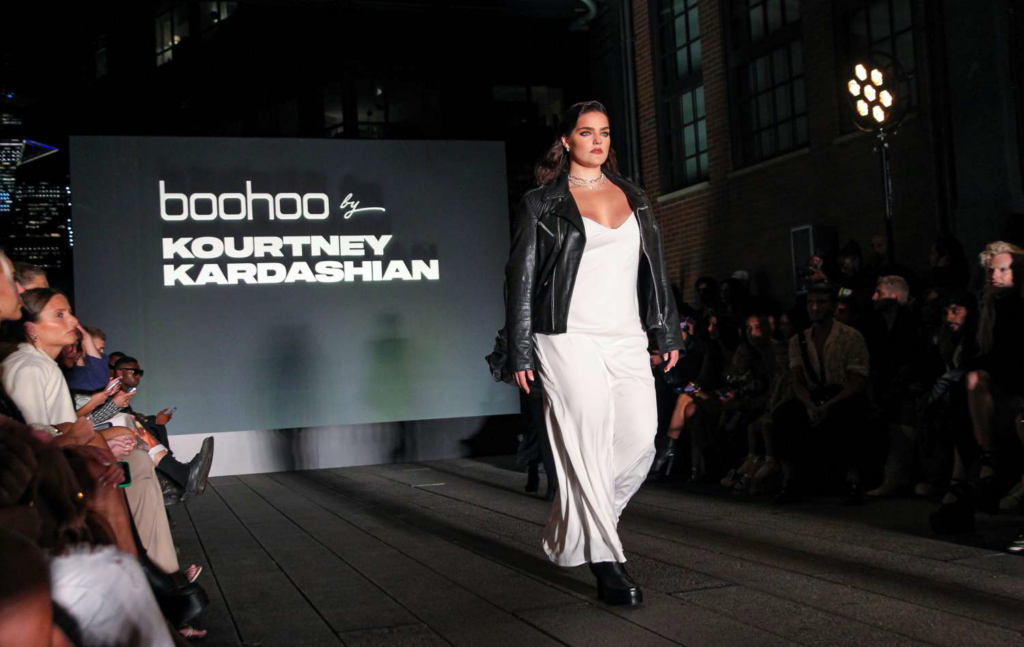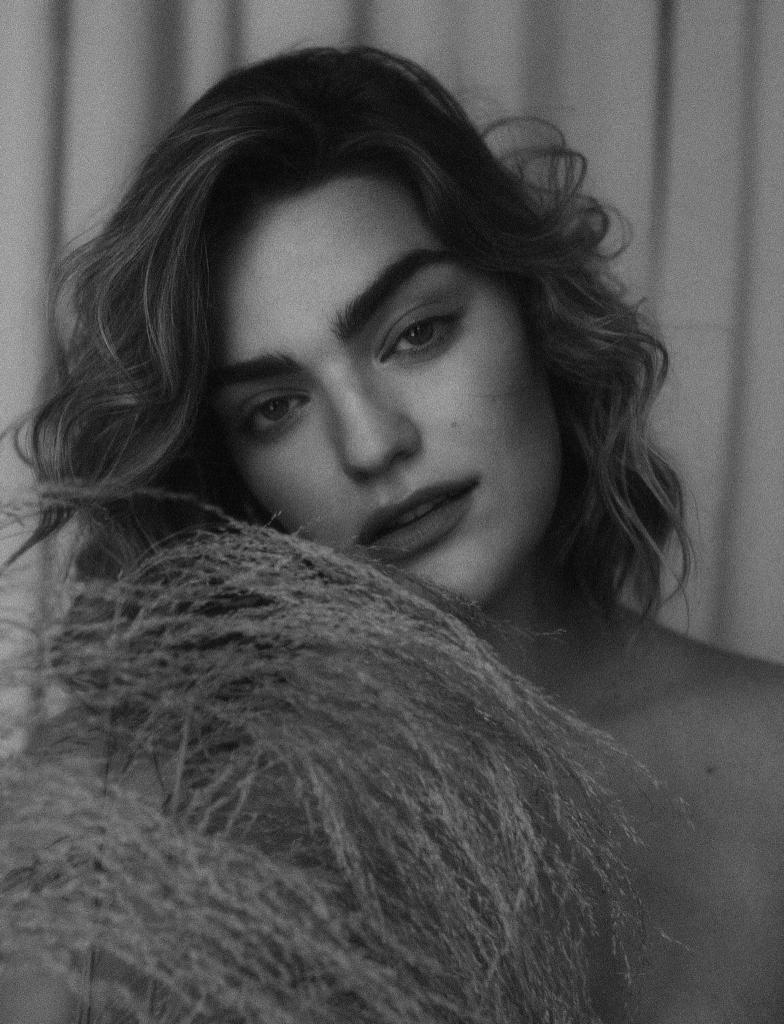Irena Kaci

If you happened to be a pre-teen or a teenager in the 90s or even early aughts, you might’ve dreamt of living the life of a Delia’s Catalog Model. Delia catalogs arrived with impressive regularity into my mailbox, often heralding the season before the rest of the world could get a “lewk” in edgewise. Of course, immediately after the high of inhaling the new trends came the low of knowing no number of wedge sandals paired with chunky striped sweaters could possibly transform the unruly body of a teenage girl into that of those svelte magnificent creatures cartwheeling their way through the pages of that publication and, therefore, life.
Such was the accepted way of the world: modeling required the kind of thinness and appetite for thinness that was comically out of reach for the average human. Yet only a couple of decades over into now, and the world of modeling has all but been transformed. As a decades old, outrageously adult woman, I nearly wept with relief once Target introduced their line of ‘plus size’ clothes and started placing ‘curvy’ mannequins around their stores alongside the standard issue gazelles of modeling’s heyday. Moreover, thanks to the advent of social media, there are countless ways to influence the way ‘lewks’ are presented, and anyone with a smartphone has at least a starting point toward the world of modeling.
One such person is Worcester’s own Misia O’Brien, a young upstart who is now living in New York City as a working model. O’Brien’s story is not dissimilar to mine and countless others. She grew up in Worcester, attending Flagg Street, then Forest Grove, then Worcester Academy. During her formative years she often felt outsized, her proportions never quite fitting into the ‘junior’ section of most department stores. “My older sister was always this tiny, petite person, and could shop at all the cute tween areas, but by the time I was thirteen I was having to shop in the ‘women’s section’. It obviously made me feel like I just didn’t fit.”

It was due, in part, to these kinds of experiences that made modeling not seem like a real option for O’Brien. “It all started with taking my senior photos in high school. I worked with this amazing photographer from the Worcester area, Penny-Lynn Earle. She was super encouraging and managed to capture some fantastic photos. She suggested that I try modeling, since plus size modeling had just been having ‘a moment’, and she said I was very photogenic.”
O’Brien started to dabble in modeling around then but still didn’t feel ready to pursue it more seriously. “I was finishing college and that’s really what I focused on. I studied business at UMASS Amherst and wanted to make sure I got my degree.” After college, however, O’Brien felt herself more and more drawn to modeling. Misia O’Brien’s father, Michael served as City Manager for 10 years during her childhood. “I was in and out of city hall throughout my life and felt like a little celebrity walking through those halls, so maybe some part of me was ready for a bit more exposure as an adult.”
A year ago, O’Brien signed with Muse Modeling in New York City, and moved there to pursue modeling full time. Wanting to become a role model to a whole new generation of women pushed O’Brien to seize the opportunities coming her way, and continued to present herself as the fierce, and unapologetic representation of beauty. “When I first started, I wanted to be someone to whom a smaller version of me could look up. I wanted and still want to empower people to be confident in their own skin. To be able to exemplify that ‘yes, you can have curves, and be really tall, and be stunning.’ I really want to model that.”

O’Brien has worked with many stores that are household names, including Target and Macy’s. “I really would’ve never pictured myself doing so much and going so far, and it’s important sometimes for me to take a step back and give myself due credit. There was a LOT of lead up to this. You don’t just get offered jobs like that right off the bat. And I need that because as a model, it is so hard not to look in the mirror and nitpick every flaw. I’ve met a lot of women who I look at and wow they are so beautiful, they are curvy and I feel the definition of what a woman is. They are role models for me. “
Even with all the changes for the (much) better, the world of modeling has a long way to go. “For a while, the term ‘plus size’ bothered me. As a ‘nontraditional’ model I have come to realize that all of us in this category are still grappling with the way we view ourselves and the terms used to identify us. I recently learned that seventy percent of women are a size 14 or over. We’re not plus. We’re not fat. I’m a model. I remember being younger and shopping for clothes with my sister, who was still wearing junior sizes and having to contemplate a lot of the worst things about my body. My options were limited and unflattering in the more adult section because they didn’t make teen clothes in my size. We want to wear clothes that flatter our bodies; we want to wear what looks cute. They [designers] are missing a huge population of America.

In the future, O’Brien hopes to work more in the ‘beauty’ side of modeling, including things like make-up, skin care and hair brands. “A lot of those campaigns still go to the more traditional model, and you still don’t see a lot of curvy or plus size representation in those ads.” The industry has made great strides but some of the traditional challenges that all models face come up regardless. “A lot of people don’t realize what a toll it takes on you. Even if you hate the picture, it will be posted and people are going to see it. Mentally it’s been very challenging to get out of my own head so that I can and let it happen.”
Still the desire to better the scene for future generations keeps O’Brien focused on her goals, “Definitely the push for me to do this is the fact when I grew up when I was 10 or 11 years old. I didn’t have anyone to look up to as my own shape or figure. Every time you saw anyone in modeling, I felt like I needed to match these figures all over. I want the next wave of children to have a different, a better experience. That’s what keeps me going.”

Echoing O’Brien’s perspective, Karon Shea, local modeling agency owner, agrees that the modeling landscape has changed. Shea has been a talent/model scout for 50 years, and has had the experience of working through many of these transitions. “Things are so different now. We work a lot with different types of people. It has come so far. It has changed so much. I put up a child with braces today for a Ralph Lauren Campaign. Advertisers are now looking for a more approachable, kid next door image.”
Shea owns her own agency right here in Worcester, where she has been helping make dreams come true for 42 years. Shea Management moved to a new location on Water St. about 18 years ago, in part to expand in some new areas and offer a variety of performance enhancing workshops. “Four dreams, one stage. That’s what I like to say. An actor needs to be groomed, models need to know how to act, dancers need to know how to find their light. It’s all connected.” In their current iteration, the agency also offers voice lessons, acting classes, as well as dance classes through Central Mass Dance Academy, owned by Shea’s daughter.

It’s obvious that Shea works hard to keep her clients happy and push for their future goals with shrewdness and enthusiasm. “We operate on a lot of different divisions, commercial, lifestyle, fashion etc. We take our clients to the New York area, we give them exposure; I’ve taken certain divisions to Paris, sizes 16-22.”
Shea also arranges photo shoots whenever clients ask, “It’s not mandatory to use my photographers, but it does offer you a more economical option. It’s a day but it does streamline the process since I can monitor the photo shoot and ask for what I need in real time. We shoot indoors and outdoors, and I give a lot of good advice during the session.”


Changes are especially obvious in the bridal industry “Bridal shows, they always want plus. That’s the one of hardest requests to fulfill, because Bridal Shows ask for plus but they also need tall, at least 5’8”.” But the scope is wide enough that there is work to be had for anyone with the drive and desire to get into modeling and entertainment. “We hire people who are in their 40s, in their 50s, men, women, kids. Really, if you’re interested, there’s something out there for you, and it’s our job to find it. In fact, we just finished a large project with Angela Coppola Productions, and have a standing arrangement with them, as well as Hasbro, that anyone hired through us goes directly to print. It ends up being a really good deal for the client for almost a day’s work.”

The changes are being felt even amongst the youngest models out there: “My children’s division has changed. It’s not always about being so beautiful. It’s so much more about personality and being comfortable interacting with others on camera.” This leads Shea to her favorite part of her job these days, passing on some hard won knowledge to the next generation. “I love teaching the classes. The acting classes are so fun for the kids because it brings out their imagination, and brings out their ability to communicate. And we don’t ever treat it like a competition.” Low stakes, maximum fun, maybe that is the future of modeling.






